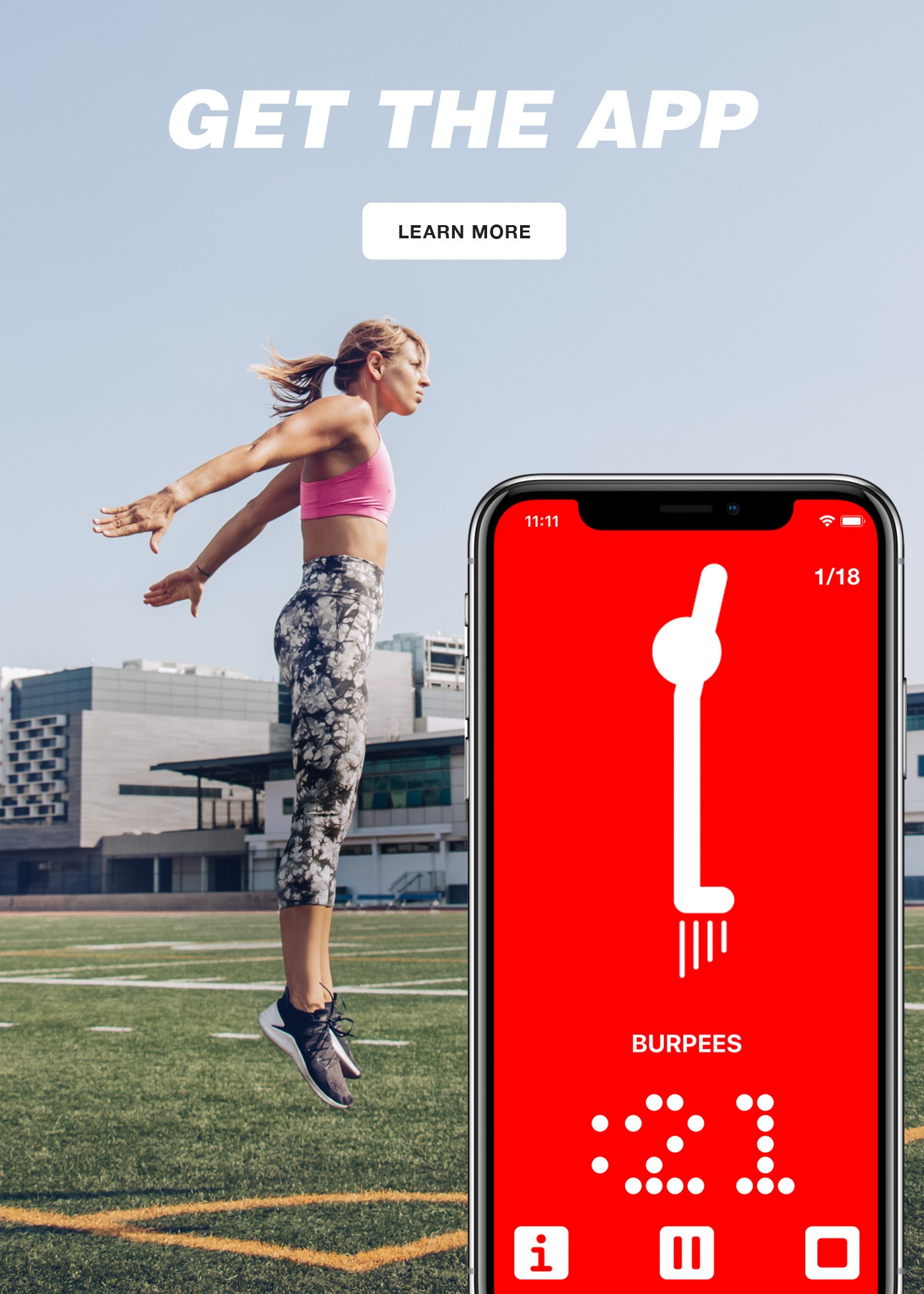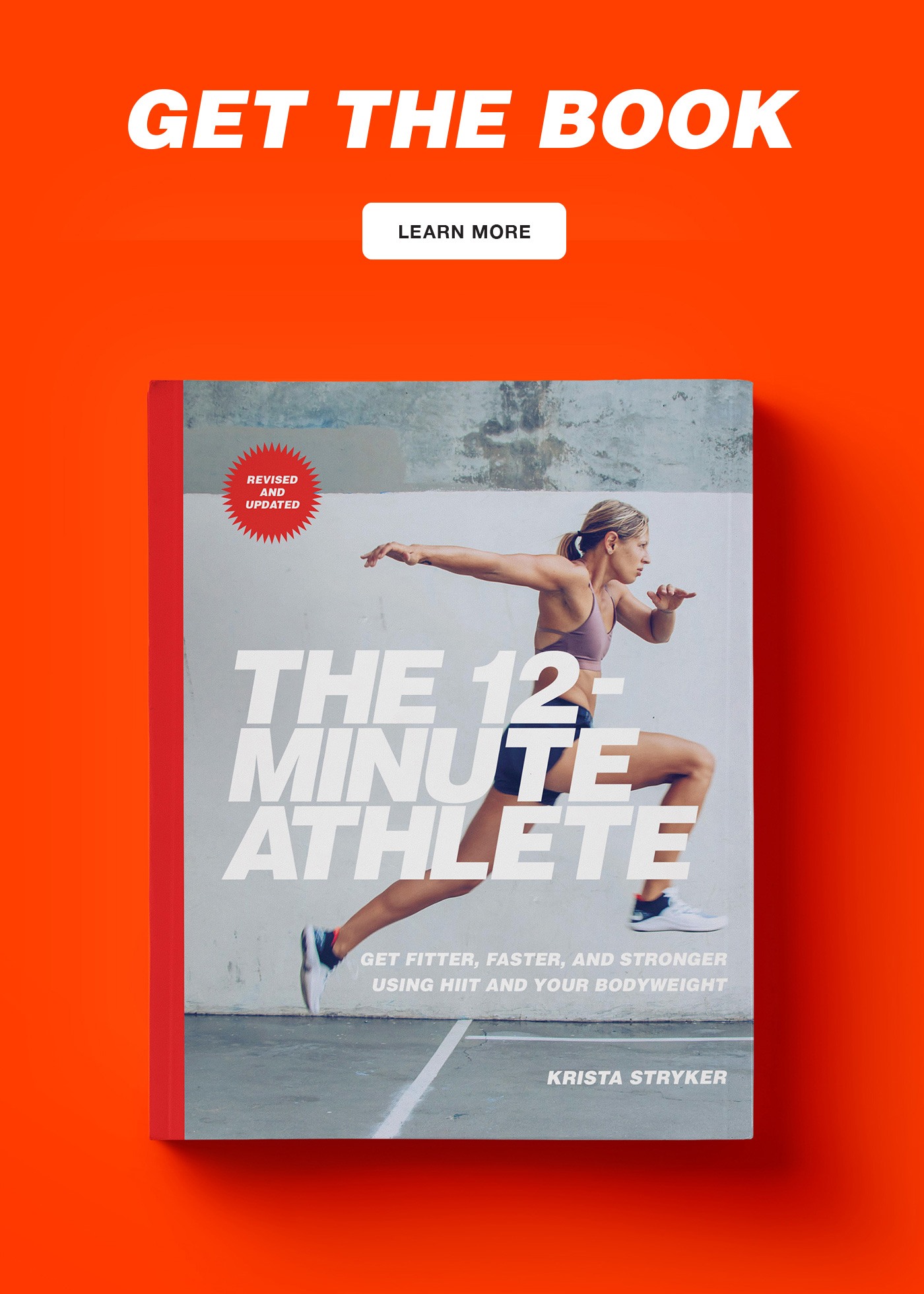Note from Krista: This post is by our awesome 12MA team member, Kersten. I hope you find her story as interesting and relatable as I did. Please let us know your thoughts in the comments!
In today’s post, I’d like to share with you my recent experience with not being able to work out for a long time due to some health reasons, and how I started training again after I felt better again.
After being active for most of my life, I wasn’t allowed to work out for six months starting at the end of last year. I’ll tell you all about my story and why in the post, and while you may not have experienced the same thing I was struggling with, if you’ve been sidelined from working out for a while due to injury or illness, I believe this post will help you to get started again safely.
The Backstory: Becoming “Too Healthy”
I’ve been pretty active most of my life. However, when I started college, I got busy with school and gained almost 30 pounds in about a year, despite still working out moderately. I felt horrible about myself, so I decided that the weight had to go. I joined Weight Watchers, started eating a very low-fat and low-calorie diet, and began running a lot to lose that weight.
And I did indeed lose weight—in five months, it dropped from 163 pounds to 132 pounds. But during that time I also lost my period.
If you’re a woman, you may think, what a relief! If you’re a guy, you may think, so what? Well, I get both of your perspectives. But it was still odd. I saw a few doctors about it, but no one said that not having a period was particularly bad for me. It may be more difficult to have babies one day, but you’re only 21, so there’s time—that’s what they told me.
Some of them wanted me to take the birth control pill (which, by the way, does not give you a period but a bleed that is caused by synthetical hormones. This is not the solution because your body isn’t still working!).
I had no idea that running 6 days a week for at least an hour and eating a low calorie diet was what caused me to lose my cycle—a condition called hypothalamic amenorrhea.
Because I enjoyed movement and no medical professionals told me it was a problem, I kept doing it. Little did I know that because of all that, one day I’d be forced to take almost six months off from training!
I used to run this way at least six days a week for nearly seven years until a few years ago when I found HIIT and strength training and reduced my running quite a bit. Although my eating had normalized and I was no longer religious about not eating “bad foods”, I still made sure to eat as healthy as I could.
More Signs Of Overtraining
It wasn’t until December of last year when I started seeing an acupuncturist for an unrelated issue that we started talking about my general health. I told him that I’m okay otherwise, although I haven’t had my period for 10 years… and I was also actually starting to feel very tired in my workouts. It was getting harder to motivate myself to go and get them done, and I sometimes had to stop my workouts because I had no energy. I wasn’t sleeping well and I was often feeling depressed.
As I later learned through a ton of research, these symptoms, plus the loss of your period, are all common signs of a severe hormonal imbalance for women. Also, when women don’t have a natural period for over a year, their bones start to lose density, they are at higher risk of getting osteoporosis, heart disease, as well as cognitive diseases such as Alzheimer’s.
My acupuncturist told me that I may have lost my period as a result of training a lot (at the time I discussed it with him in last December, I did mostly high intensity weight training, some HIIT and one run a week, for a total of six days a week). I had gained a lot of weight back since my extreme weight loss, sitting then at 152 pounds, but it was mostly lean muscle. The fact that I had once lost about 30 pounds quite quickly may have caused my hypothalamic amenorrhea as well.
The Solution…
After discussing my symptoms, my acupuncturist told me I needed to stop working out, or at least significantly reduce my exercise.
I didn’t want to believe him… but as I went home and started doing my own research, it became clear that the recipe to restoring my hormonal health was really to stop training and start eating more to heal my body that had once been through severe calorie restriction and extreme daily running.
I had no idea how long this workout ban was going to last, but I was committed to getting healthy. For the next almost six months, I walked daily and did yoga twice a week. I started eating much more. I gained about 15 pounds. Unsurprisingly, this was tough on me both physically and mentally… but one day, about five months after stopping exercise, my cycle came back. About a month later, I started working out again.
Getting Back into Working Out Again After a Long Break
It’s been five months since I’ve been recovered from hypothalamic amenorrhea and been able to do little bit more than just yoga and walking. But I’ve had my fair share of setbacks, and sometimes I feel like I’m starting my entire fitness journey over again.
If you’ve had to take a break from training any significant amount of time, whether it was due to an injury, stressful times at home or at work, or if you’ve been through something similar to what I went through, maybe you can learn from my experience. Here are the things you should pay attention to when you start working out again after a long break:
You Can’t Just Start Where You Left Off
Just before I got sidelined from working out, I had started working more on heavy barbell squats. When I came back six months later, I knew that of course I couldn’t jump right in and do the same weight that I had used half a year ago, but I didn’t quite understand how much less weight I should put on my barbell.
As a result of overestimating my strength, I injured my knees after about three weeks. That meant another one-month break from squats.
When you’re getting back into training after a break, you need to ease into it slowly. Start with lighter weights and easier movements to prepare your body and joints for more intense training later on.
Know your weaknesses and dedicate more time to working on them
We’ve all heard that full body, compound movements are the best way to go if you want to build a strong body and get more work done at once.
Well, after a long workout break, things may look little different for you. My knees and back have traditionally been the weaker areas of my body, so they had naturally weakened even further during my break. I hurt my knees when I started squatting again because the knee stabilizing muscles (the ones on the inner and outer thigh and especially glute muscles) had lost a lot of strength, so I now had to pay special attention to strengthening those special muscle groups.
I also have special core exercises that I need to do 3-4 times a week to relieve some back pain I’ve experienced. The good news is that being consistent pays off, and these days I have rarely any more knee pain and I can squat again. My back still needs work though.
And this is important to keep in mind: if you’re recovering from injury, please do the exercises your physical therapist is prescribing you!
They may seem silly and ineffective if you’re used to doing bigger movements, but as a personal trainer I see many people who never did their rehab after an injury they got 10 years ago. As a result, they often have some serious muscle imbalances now. They’re much harder to fix later.
You Need More Time to Warm Up
I used to be that person who would jump out of the bed in the morning, walk into the gym or to the nearby park, do 10 squats and 10 push ups as my warm-up, and then jump right into my workout. I just didn’t seem to need a longer warm up.
Well, this has changed. I now take a lot of time to warm myself up, because I find that when I don’t I may get injured. I do some yoga moves, my knee rehab work and core-specific exercises, a lot of dynamic stretches, and then work out. My warm up is as long, or sometimes even longer, than my actual workout.
Keep Your Workouts Simple and Short
Don’t overcomplicate your workouts if you’re just getting back to them. The actual workout part doesn’t have to be an hour long, and there’s no need to do 20 different exercises during one session. Take plenty of breaks between the exercises, until you really feel that you’re recovered.
Some days, my knee rehab and core exercises are my entire workout. Other times, I pick three or four exercises and do two or three rounds of them. Think things like squats (you can do them with just your own bodyweight or using weights if you’re feeling okay), push ups, lunges, and plank holds, for example. Keep the weight moderate at first, and if you do plyometrics, make sure to ease into those as well.
Keep it to Around Three Times a Week
In addition to keeping your workouts very simple, you also need to make sure you keep your schedule reasonable and give your body extra time to recover.
It doesn’t matter if your break was caused by physiological/physical issues like hormonal imbalance or injury, or you were just too unmotivated to work out for a long time—there’s no need to do more than three workouts a week, at least at first. If you push it, you may stress out your body and mind again, and you’ll set yourself back even further.
Take it easy, and be kind to your body!
Kick Your Ego to the Curb
You may feel devastated when you find yourself not being able to do the things you used to do before. It was hard for me to accept at first that I can do barely one wonky pull up now. But then I looked at it realistically: I didn’t work out for six months to restore my health. I had put on 15 pounds to restore my health. It wasn’t actually that surprising that I couldn’t do pull ups anymore!
It doesn’t make any sense to compare yourself to that person who you were in totally different conditions. You needed that break for a reason. Just do your best to strengthen your body again, and take one day at a time.
Pay Attention to Your Body
Never push yourself through physical pain, especially when you’re coming back after an injury. Getting hurt is not worth starting the whole recovery process over again. Know your body and your limits.
In my case, I’ve come to learn exactly when I’ve done too much—I lose my sleep! This is the first sign that tells me that it’s time to cut back on exercise if I don’t want to mess my hormonal balance up again. And believe me, I don’t. Know what your signs are (extreme exhaustion? lack of motivation? nagging pain? constant soreness?) and take a break before your body forces you to.
Be Patient
As much as taking a long break from exercise sucks, it can also teach you something—patience. When I was still recovering from hypothalamic amenorrhea, I had no idea when I would be able to work out again. Some days, I didn’t even know if not exercising and eating tons more food really was the key to restoring my health.
But I believed in it and stayed patient. It worked.
I’ve had to be extremely patient in slowly easing back to working out, which hasn’t been easy. But I’ve come to understand that no success happens overnight. When it comes to starting working out again after a long break, slow and steady really wins the race.

Kersten Kimura is a NASM PT, bootcamp instructor and personal trainer located on the East Bay, California. Check out her website here to learn about her take on womens’ health and hormones, balanced and obsession-free living and get her ebook, 9 Ways How Not Having a Period Is Dangerous For Your Health.



I am glad you covered this aspect of training. I have adrenal fatigue and thyroid condition. I used to push through being too tired and I would workout anyway. But I have learned when I am tired to rest and not feel guilty skipping a workout. I also went through a shoulder injury that took forever to heal at 45 years old. I can’t even do a pushup right now. I am trying to be patient and rebuild my strength slowly. I had a great PT and I always do my exercises! Some day I will be able to do a pushup or pull-up again.
I know what you mean Diana! Adrenal fatigue and thyroid problems are closely related to what I was dealing with, as many women who have one thing also have other(s). Rest and sleep are everything! I hope your shoulder gets better soon. I’m sure you will get back to pushups and pull ups, you just have to stay patient (which is what I’m telling myself too!)
Thanks for sharing your story. This was very helpful! Glad you’re feeling better and getting back to doing what you love!
Thank you Maureen 🙂 I am feeling better, but still tend to get impatient sometimes!
Kersten. Many thanks for sharing your story. It resonated with me so much. I broke my leg skiing four years ago now. I knew I had to get back on skis to banish my fear but I’m nowhere near as brave as I used to be in the slopes. The thing you said which I totally agree with is to not beat yourself up over it and also strive for feasible improvement with your overall health in mind. Let’s face it without health (which is paradoxically why we exercise in the first place), we are powerless. Such a great article. Thanks again. S xx
Thanks you Sylvia! I’m sorry to hear about you breaking your leg! There’s definitely a time for taking it easier and not pushing yourself hard. The times when you want to be real hard on yourself, it’s helpful to think, would I ever be as hard with anyone else? The answer is no… and that’s how we should treat ourselves too. 🙂